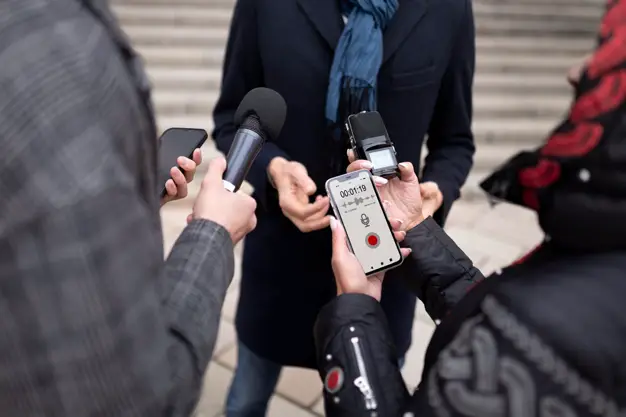What Exactly Do PR & Advertising Departments Do in Companies?
PR-related work is something that many international students studying business aspire to pursue after graduation. In our previous articles on industry knowledge, we mentioned that marketing positions in public relations (PR) and media can be divided into two broad directions: brand PR and advertising media.
In reality, within PR and media positions, there are numerous specialized roles, some of which might sound familiar and actually belong to the PR and media category. PR and media positions might not always be in the spotlight but often play a crucial role within a company. This article will explain what PR and media positions are all about and what roles they play in a company.
Brand PR Positions

For brand PR, the work can be summarized primarily as maintaining image, monitoring public sentiment, and managing relationships.
Maintaining Brand Image
For a company, the influence of its brand is closely tied to its overall strength. Larger companies, in particular, place great importance on the effects of their brand. Ensuring that the brand's tone remains on the right track, controlling brand positioning in various mainstream media, increasing brand awareness and reputation across different domains—these are common tasks for PR positions.
This is achieved through activities like writing articles and managing social media to enhance visibility and maintain the brand's relevance. Being skilled at identifying hot topics and choosing the right moment to promote the brand are essential. Depending on the type of PR activity and factors involved (e.g., sponsorship, product launches, social events, etc.), different PR strategies are developed.
Monitoring Public Statement
Additionally, for brand PR positions, a significant focus is on monitoring public sentiment. With the widespread use of the internet, good news travels far, but bad news travels even farther, and it does so quickly.
For brand PR departments, it's essential to quickly identify potential negative information that could harm the company and address these issues before they cause significant damage. This includes devising alternative strategies and emergency response plans to mitigate unforeseen issues.
Some common activities associated with PR include managing user-generated content, addressing negative publicity, moderating discussions, and controlling or deleting inappropriate comments.
Managing Relationships
Handling relationship matters is relatively self-explanatory. PR positions often rely on connections and networks, which is why having a network of media contacts is preferred. This includes mining and maintaining media relationships, establishing and efficiently managing a media database, maintaining open communication with the media, and keeping up with policy-related information that affects the company.
Most of the work within brand PR is behind the scenes—making sure the brand, services, and products are in the spotlight while leaving no visible trace of their own work. Generally, larger companies establish brand PR positions, but for smaller companies, brand PR might be outsourced to specialized PR agencies.
For international students interested in brand PR roles, it's advisable to apply to larger companies that have a higher demand for this type of work, as it allows for better development within a comprehensive PR system.
Advertising Media Positions

In the initial understanding of many people, advertising is an extensive field that covers everything from advertising agencies to photography, makeup, and post-production. However, positions like photography and post-production are typically more inclined towards "technical roles" within the advertising field, which is distinct from traditional marketing positions.
For most international students who aspire to work in marketing with a focus on advertising, their roles are more aligned with media cooperation and ad placement.
For companies, whether it's brand promotion or product exposure, advertising is a crucial process. Especially for larger companies, new ads go live almost every day. Therefore, specialists are needed to ensure the cost-effectiveness of advertising placements, monitor the effectiveness of ad placements, and find more efficient methods for ad placements.
Hence, the main responsibilities for media cooperation and advertising placement positions are as follows:
-
Understanding the ad placement models for various websites and cooperation methods for mobile platforms.
-
Identifying new ad placement channels and maintaining relationships with existing partners.
-
Assisting in executing various ad placement plans, managing the entire ad placement process.
-
Monitoring the entire ad placement process and final results, continuously optimizing ad placement channels.
Advertising and media placement positions play a significant role in marketing work. The effectiveness of ad placement can directly impact the success of an entire marketing campaign or a company's strategy.
Besides creative content and production, a significant part of the work in advertising media positions includes conducting tests before ad placements, evaluating the cost-effectiveness of different channels, tracking secondary advertising exposure after placements, and optimizing work.
Similar to brand PR positions, roles in advertising media are often behind the scenes, with the effectiveness of ads serving as the primary measure of success.
In Summary
For international students, if they wish to work in brand PR and advertising media placement positions, it's important to gain experience to better understand the work logic and principles of these positions. The specific focus of work and skill requirements can differ depending on the company and industry.
Aniday's HR Services
Headhunting Service
Find and recruit quality candidates in just 1 week! Supported by 40,000 experienced headhunters in IT, Finance, Marketing… capable of recruiting in any region.
Headhunting Service ➔Employer of Record (EOR) Service
On behalf of your business, we recruit employees and handle payroll without the need to establish a company in markets such as Vietnam, Singapore, Malaysia, India, Indonesia…
Employer of Record (EOR) Service ➔